Intrinsic localized modes have been theoretical constructs for more than a decade. Only recently have they been observed in physical systems as distinct as charge-transfer solids, Josephson junctions, photonic structures, and micromechanical oscillator arrays.
David K. Campbell, Sergej Flach, and Yuri S. Kivshar
In solid-state physics, the phenomenon of localization is usually perceived as arising from extrinsic disorder that breaks the discrete translational invariance of the perfect crystal lattice. Familiar examples include the localized vibrational phonon modes around impurities or defects (such as atomic vacancies or interstitial atoms) in crystals and Anderson localization of electrons in disordered media.1 The usual perception among solid-state researchers is that, in perfect lattices--those free of extrinsic defects--phonons and electrons exist only in extended, plane wave states. That notion extends to any periodic structure, such as a photonic crystal or a periodic array of optical waveguides. Such firmly entrenched perceptions were severely jolted in the late 1980s by the discovery that intrinsic localized modes2 (ILMs), also known as discrete breathers3 (DBs), are, in fact, typical excitations in perfectly periodic but strongly nonlinear systems.
The past several years have seen this prediction confirmed by a flood of experimental observations of ILMs in physical systems ranging from electronic and magnetic solids, through microengineered structures including Josephson junctions and optical waveguide arrays, to laser-induced photonic crystals. Experimentalists are currently hot on the trail of ILMs in Bose-Einstein condensates (BECs) and biopolymers. Hopes are high that these exotic excitations will be useful in all-optical logic and switching devices and in targeted breaking of chemical bonds, and will prove helpful to the understanding of melting processes in solids and conformational changes in biomolecules.
In this brief overview, we have attempted to capture the excitement and to explain the essence of these remarkable nonlinear excitations. We urge readers to consult some of the several pioneering papers, recent reviews, and Web sites for more details.2, 3
Intuition and theory
A good working definition of ILMs (or DBs) is that they are spatially localized, time-periodic, and stable (or at least long-lived) excitations in spatially extended, perfectly periodic, discrete systems. The existence of two distinct names for the same phenomenon is an indication that separate historical paths led to their discovery and provides key insights into the reasons for their existence. A DB is a localized, oscillatory excitation that is stabilized against decay by the discrete nature of the periodic lattice. Box 1 discusses this path to DBs in more detail. An ILM is an excitation that is localized in space by the intrinsic nonlinearity of the medium, rather than by a defect or impurity. Box 2 reviews this path to ILMs.
By the early 1990s, researchers following these two paths had converged on the insight that stable localized periodic modes, whether called ILMs or DBs, were generic excitations in discrete nonlinear systems, and that to study them systematically, one should start with a system of uncoupled nonlinear oscillators--the "anti-continuum limit"--and treat the coupling as a weak perturbation.
To pursue this insight, consider the simple problem of a diatomic molecule, or dimer, modeled initially by a classical system of two coupled anharmonic oscillators. First, imagine that the interoscillator coupling is switched off; that leaves two independent nonlinear oscillators. The nonlinearity of the oscillators means that the frequency of their motion depends on the amplitude or, equivalently, the input energy. In the case of the familiar simple but nonlinear plane pendulum, for example, the period varies from the small oscillation harmonic limit of 2π√(l/g), where l is the length of the pendulum and g is the acceleration due to gravity, to infinitely long as the amplitude of the pendulum's angle approaches π. When the oscillators are completely uncoupled, we can form a localized mode by exciting only one of the oscillators, and the resulting frequency can fall anywhere in the range allowed by the form of the anharmonicity of the individual oscillator.
Now consider exciting one oscillator strongly but the second one only weakly so that most of the energy is initially localized at the first oscillator. Because the frequencies depend on the amplitudes, we can, in principle, choose amplitudes such that the frequencies of each oscillator are irrationally related. For strictly incommensurate frequencies, no possible resonances exist between any of the oscillators' harmonics. If we now turn on the coupling between the oscillators, intuition suggests that the transfer of energy from one to the other must be very difficult, if even possible.
That heuristic result can be formalized by the powerful Kolmogorov-Arnold-Moser (KAM) theorem of nonlinear dynamical systems, which establishes that the incommensurate motions do remain rigorously stable for sufficiently weak coupling and ensures that the excitation energy remains localized on the first oscillator.
Next consider embedding the two nonlinear oscillators in an infinite chain of similar ones; that is, physically place the dimer molecule in an infinite molecular crystal of similar dimers.4 The following model is an example of such a system:
Here φn(t) represents the displacement of a nonlinear "quartic" oscillator at lattice site n, so that the equation represents an infinite one-dimensional array of anharmonic oscillators coupled to their nearest neighbors with a coupling strength given by 1/(Δx)2. The notation is a deliberate reminder that our model includes a finite spacing between molecules; the formal continuum limit is obtained by taking Δx → 0, in which case the entire second term in the equation becomes ∂2φ (x, t) / ∂ x2. As usual, we start by studying the system's small (linear) oscillations. The local oscillator at each site corresponds to a double-well potential, with degenerate minima at φn = ± 1. Expanding around the minimum at φn = 1, we obtain the spectrum of the linear waves, ωq2 = 2 + (2/Δx)2 sin2(q/2). The linear spectrum consists of a band that is limited by two cutoff frequencies, 2 < ωq2 < 2 + (2/Δx)2, and is bounded above and below; the upper cutoff arises solely from the effect of discreteness.

Figure 1
As with the plane pendulum, the double-well quartic oscillator has a frequency that, for small oscillations around the minimum, decreases with increasing amplitude of the motion. That means one can create a localized periodic oscillation at a frequency ωb lying below the spectrum of linear oscillations, as shown in the bottom panels of figure 1. Setting just one of the nonlinear oscillators in motion at a fairly small amplitude will do the job, so that its frequency is just smaller than the smallest allowed linear frequency. Then if the coupling between the sites is weak enough--Δx is large, producing a very narrow band--not only will the fundamental frequency ωb of this ILM be below the band of allowed linear excitations, but all harmonics of ωb will be above the band. Hence, there will be no possibility of a linear coupling to the extended modes, even in the limit of an infinite system when the spectrum ωq becomes dense. This means that the ILM cannot decay by emitting linear waves (that is, phonons) and is hence linearly stable.
To understand the high-energy ILMs that also occur and are shown in the top panels of figure 1, consider again the limit of large Δx, which creates a weak coupling between the oscillators. If we set a single oscillator in motion, but now with large amplitude, the quartic nature of the potential implies that the frequency of the ILM will increase with increasing amplitude. For large enough amplitude, the frequency will move above the highest frequency in the very narrow--because Δx is large--band of linear excitations. For this large-amplitude ILM, all higher harmonics lie above the band because the fundamental frequency does, and so the excitation is linearly stable.
The simple quartic model illustrates how the two critical components--nonlinearity and discreteness--can combine to make ILMs possible. Nonlinearity allows strongly excited local modes to have a fundamental frequency outside the spectrum of small oscillations, and the finite extent of the spectrum in a discrete system allows all higher harmonics of the ILM also to lie outside the linear spectrum. The locations of these frequencies prevent the resonances that, in general, destroy the continuum breathers discussed in box 1. This intuitive understanding of the origin of ILMs/DBs in discrete nonlinear systems was presented in the pioneering paper of Albert Sievers and Shozo Takeno in 1988.2
Over the intervening years, both analytic and numerical studies have explored the existence and properties of ILMs in a variety of nonlinear mathematical models of physical systems. Robert MacKay and Serge Aubry, for example, rigorously proved the existence of DBs in networks of weakly coupled anharmonic oscillators.5 Remarkably, their theorems are insensitive to the lattice dimension: Unlike continuum breathers (see box 1), which occur only in highly constrained 1D systems, DBs are equally common in two and three dimensions.
Additional analytic results established that ILMs occur in one-parameter families, are dynamically stable with respect to perturbations, and are structurally stable with respect to changes of the equations of motion.3 Combined analytic and numerical studies showed that ILMs act as strong, frequency-dependent scatterers of plane waves and can be quantized. Theoretical studies by Ding Chen (Saclay) and his collaborators gave an explicit algorithm for moving ILMs along the lattice, and calculations of Michel Peyrard (ENS, Lyon) established that ILMs can be generated from thermal fluctuations.6 The Chen and Peyrard results suggest that ILMs may play critical roles in the transport of energy and other dynamical properties of nonlinear discrete systems, such as melting transitions in solids and folding in polypeptide chains.
Experimental observations of ILMs
Much of the present excitement surrounding ILMs comes from numerous recent experimental observations in physical systems. Those systems range from solid state mixed-valence transition metal complexes7 and quasi-1D antiferromagnetic chains,8 through arrays of Josephson junctions9 and micromechanical oscillators,10 to optical waveguide systems11 and 2D photonic structures.12 We look briefly at the nature of ILMs in several of these distinct systems.
Solids. The natural periodicity of solid-state materials makes them obvious targets to search for ILMs. But their small length scales and quantum effects make observing or visualizing the excitations experimentally challenging. As discussed in box 3, one quantum manifestation of localization is a redshift in the frequencies of many-phonon excited vibrational states. In recent experiments, Basil Swanson (Los Alamos National Laboratory) and colleagues and K. Kisoda (Wakayama University) found strong evidence for the existence of ILMs in the charge-transfer solid PtCl by measuring resonance Raman spectra.7 The redshift in the resonances was obtained for up to seven participating optical phonons, indicating the localized excitation of Pt-Cl bonds.
Using a phenomenological model, theorists including Konstantin Kladko (Ingrian Networks) and Nikos Vulgarakis (University of Crete) and their collaborators have reached quantitative agreement with those experiments.7 But challenges remain for theorists to develop a more microscopic model and for experimentalists to measure explicitly the spatial extent of the ILM. Raman spectroscopy measures only frequency shifts, from which one infers localization.

Figure 2
In magnetic solids, one expects to find localized spin-wave modes that are the direct spin analogs of the ILM phonon modes. Ulrich Schwarz (Cornell University) and his collaborators8 studied the quasi-1D biaxial antiferromagnet (C2H5NH3)2CuCl4 by driving it with a microwave pulse at the lowest antiferromagnetic resonance frequency of 1.5 GHz. High-intensity microwave pulses drive the spatially uniform antiferromagnetic resonance into a nonlinear region, where it becomes unstable. According to numerical simulations, the resonance decays into a broad spectrum of ILMs, which correspond to localized spin states. Measuring the time-delayed absorption spectra reveals the corresponding redshifts together with observable lifetimes of ILMs up to milliseconds. As in the case of the PtCl chains, explicit measurements of the spatial localization are needed to confirm the expectations from simulations.
Josephson ladders. Following theoretical suggestions of Louis Floria (University of Zaragoza) and his collaborators, Enrique Trias (MIT), Peter Binder (University of Erlangen), and their collaborators have made some of the most visually striking observations of DBs yet found.9 Their experiments involved periodic structures consisting of an annular array of coupled Josephson junctions (see figure 2).
The excitations arise from the spatially localized voltage drops that occur at particular junctions, as a homogeneous DC bias current threads the ladder. A few junctions are in the resistive state, while the others are superconducting. The superconducting junctions generate AC voltages due to their coupling to the resistive junctions. The dynamical effects produce a variety of resonances and hysteresis loops in current-voltage characteristics of the ladder.
Optical waveguides and photonic crystals. Optical and photonic systems have proven to be fertile grounds for the creation and observation of ILMs. Indeed, one of the first experimental confirmations of ILMs was the observation of discrete spatial solitons excited in optical waveguide arrays.11 The periodic structure of the arrays produces the discreteness effects. The nonlinearity arises from the Kerr effect (the dependence of the index of refraction on the intensity of the light pulse), which in a bulk medium or slab waveguide can produce spatial optical solitons that correspond to propagating self-trapped optical beams. Theoretical analysis has established11 that this system is well described by a variant of the discrete nonlinear Schrödinger equation (DNLSE) discussed in box 2. The discrete variable n of box 2 represents the position of one of the waveguides and the continuous variable (time in the equation in box 2) corresponds to the spatial coordinate along the waveguide.

Figure 3
In the experiment, the individual waveguides are made from aluminum gallium arsenide and are 4 µm wide and a few millimeters long. Arrays contain typically 40-60 waveguides; the strength of the coupling between neighboring waveguides is controlled by their spacing, which varies from 2 to 7 µm. Yaron Silberberg (Weizmann Institute) and his collaborators injected light from a synchronously pumped laser into a single waveguide on the input side of a 6-mm-long sample and recorded the light distribution registered at the output facets (see figure 3).11 At low light power, the propagation is linear, and the light expands over all waveguides at the output. As the input power increases above a threshold, the width of the output distribution shrinks. And at a power greater than 500 W, the highly localized nonlinear mode confines the light to about three waveguides around the input waveguide; that light output is the signature for an ILM, which, in this context, has been called a discrete soliton.

Figure 4
Photonic crystals13--periodic materials in which the propagation of photons of certain wavelengths is forbidden--are another important optical system in which theoretical studies have predicted the existence of ILMs.12 The optical analog of semiconductors, these artificial crystalline structures provide novel and unique ways of controlling many aspects of electromagnetic radiation, including the exciting possibility of light-induced radiation control--that is, the use of light to switch and channel light. Two years ago, Sergei Mingaleev (now at the University of Karlsruhe) and one of us (Kivshar) predicted the nature of the ILMs that could occur in a composite photonic crystal formed by a regular 2D lattice of rods of two different types of semiconductors. That work awaits experimental confirmation. However, experimental groups led by Mordechai Segev (Technion) and Zhigang Chen (San Francisco State University) have recently used optical induction in a homogeneous nonlinear medium to confirm the existence of this type of ILM in an analog of a 2D nonlinear photonic crystal. Segev's group used a photorefractive crystal with a strong electro-optic anisotropy to create a lattice with a polarization in the nonelectro-optic direction and orthogonal to that of a probe beam. They observed the light localization in the form of 2D discrete solitons. Similarly, Chen's group used a nonlinear lattice, created by partially incoherent light, to observe strong localization in the regime of large nonlinearities (see figure 4). Both sets of results illustrate the tremendous promise for optically excited and controllable nonlinear localized states as elements of future all-optical logic and switching devices.
The best is yet to be
Armed with the fundamental understanding of the origin of ILMs, experimentalists are becoming increasingly proficient at discovering--or creating--new physical systems in which to study ILMs and their properties. For instance, in a recent experiment designed to explore the important issues of creation, transport, mobility, and interactions of ILMs, a group led by Sievers constructed an array of micromechanical oscillators.10 Nearly identical initial experimental conditions led to ILMs located at widely different sites, an important confirmation that ILMs are in fact localized by intrinsic nonlinear effects rather than by disorder or impurities.
The ability to create periodic optical lattices in which to trap BECs immediately suggests the possibility of creating and observing ILMs in those systems.14 Analytic and computational studies of the dynamical phase diagram of a dilute BEC trapped in a multiwell periodic potential reveal that, in the framework of the Gross-Pitaevsky equation (the standard equation used to study BECs), the dynamics are governed by a variant of the DNLSE (see box 2). ILMs can therefore be created even if the BEC's interatomic potential is repulsive. Recent experiments by Francesco Cataliotti and colleagues strongly suggest that an increase of the BEC density will lead to the generation of ILMs in these systems.

Figure 5
The possible roles of ILMs in biopolymers have also been a focus of concerted theoretical and experimental efforts.15 For instance, the conformational changes and buckling of long biopolymer molecules may occur in response to the excitation of nonlinear localized modes. Conformational flexibility is a fundamental property that differentiates polymers from small molecules and gives rise to many of their remarkable properties. A distinctive feature of biological polymers is the complex structure of their elementary sub-units; that structure can support long-lived nonlinear excitations. ILM excitations have been discussed in connection with the storage and transport of the energy released during adenosine triphosphate hydrolysis, with the local opening of the DNA double-helix, and with the buckling, folding, and collapse of a biopolymer chain to a compact coil, as shown in figure 5. Theoretical results predict that these effects survive in the presence of viscous damping. Thus, although it is speculative, this application of ILMs may prove to be crucial in the kinetics of conformational phase transitions of semiflexible biopolymers in solutions.
The recent theoretical, numerical, and experimental results, and the innovative concepts associated with the physics of ILMs have shed considerable light on the complex dynamics, properties, and functions of nonlinear discrete physical systems--from the nanoscale to the macroscale. The study of such systems, and the ILMs they support, underpins applications ranging from smart materials that respond collectively to external stimuli in a coherent, tunable fashion to light-induced, all-optical networks. Only a few years ago, ILMs were almost exclusively the province of theorists. Today, the rapidly expanding list of experimental observations not only establishes the ubiquity of intrinsic localized modes in nonlinear, discrete physical systems but also generates exciting possibilities for future applications both in fundamental science and in technology. Clearly, for ILMs, the best is yet to be.
Edymar Gonzalez A
C.I:19.502.773
CRF
















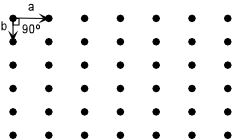
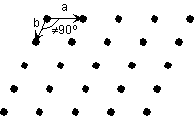
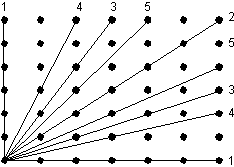
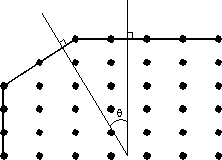
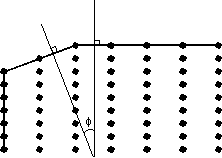
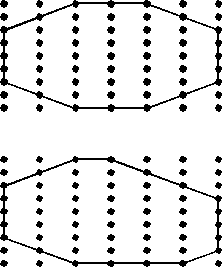
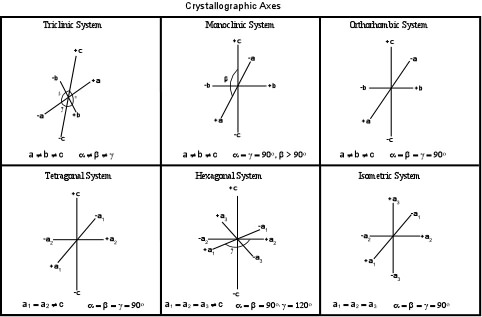
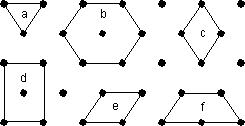





 u0 has the same energy as the ideal crystal. (Shoving all the atoms to the right doesn't cost any energy.) So, the energy will depend only on derivatives of the function u(x). The simplest energy that one can write looks like
u0 has the same energy as the ideal crystal. (Shoving all the atoms to the right doesn't cost any energy.) So, the energy will depend only on derivatives of the function u(x). The simplest energy that one can write looks like  (2)
(2)  /du). The mass is represented by the density of the material
/du). The mass is represented by the density of the material  . Working out the math (a variational derivative and an integration by parts, for those who are interested) gives us the equation
. Working out the math (a variational derivative and an integration by parts, for those who are interested) gives us the equation  (3)
(3)  (4)
(4)  , and the frequency is
, and the frequency is  . Plugging (4) into (3) gives us the relation
. Plugging (4) into (3) gives us the relation  (5)
(5) 

 atoms away atoms will move in lock-step. In the same way, decreasing the flow in a superfluid must involve a cooperative change in a macroscopic number of atoms, and thus never happens spontaneously any more than two parts of the chair ever drift apart.
atoms away atoms will move in lock-step. In the same way, decreasing the flow in a superfluid must involve a cooperative change in a macroscopic number of atoms, and thus never happens spontaneously any more than two parts of the chair ever drift apart. 

